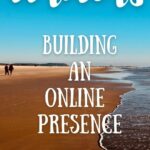by Corrin Foster, Greenleaf Book Group
Over 3 billion people utilize social media.
Authors now have the unique opportunity to create an online presence and generate buzz for their book by tapping into an engaged and passionate demographic of readers.
As social media continues to evolve and new platforms are introduced, it can be daunting to identify which social networks an author should use to promote their brand and how best to engage with the community active on those channels.
By taking the time to identify, build, and engage with a community through blogging and social media, authors can discover where the conversation is happening, become an integral part of the conversation, and generate a loyal and engaged following all their own.
Authors should think of their online presence as a wheel.
Their blog is the hub of the wheel and their social networks form the spokes radiating out from the center.
As the hub of an author’s online presence, a blog should include original and timely content to establish their expertise, highlight links to all social media channels, feature prominently a way for readers to subscribe to a feed or newsletter, and include a call to action welcoming comments and opinions for each post.
Blogging is no easy task, but the most important thing to remember when creating blog content is consistency.
When readers know what to expect (expert content organized around a central theme) and when to expect it (posting on a regular schedule), they begin to seek out that expert content and share it with their community.
Social Media
Once an author has established their blog as content hub and has been blogging consistently, it’s time to get the wheel moving with social media.
Before becoming overwhelmed by the number of social networks and their intricacies, know that authors don’t need to be everywhere—they just need to be where the conversation is happening.
Begin by evaluating each social network; Pew’s Social Networking Fact Sheet is an invaluable resource for evaluating social media usage trends and user demographics.
Here is a snapshot of the basic demographics:
Facebook skews female at 54 percent of users; fastest growing demographic is adults aged 65+; 85 percent of users earn less than $30,000/year.
Twitter has about half male and half female users; 46 percent of users engage daily; and over 40 percent of households have income of more than $75,000/year.
LinkedIn is more popular than Twitter among adults; accounts for 50 percent of college-educated internet users.
Pinterest is dominated by women; most active users are aged 18–29; income levels are split between limited and affluent.
Authors can also harness the power of the hashtag to review conversations on various social networks.
Verify that the conversations you wish to be part of are truly happening and determine how you can add value to those conversations.
Connect with Your Core Audience
Once an author has identified which social networks they should utilize to reach their core audience, it’s time to build more momentum in the wheel by optimizing profiles, connecting with relevant influencers, and starting to share content.
It’s critical that authors familiarize themselves with the best practices of their social network(s) of choice.
Use great resources, such as The Art of Social Media by Guy Kawasaki and Peg Fitzpatrick, Trust Agents by Chris Brogan and Julien Smith, and Friends with Benefits by Darren Barefoot and Julie Szabo, to help you navigate.
Above all, remember the 80/20 rule of sharing—80 percent of what is shared should be promoting others and 20 percent should be self-promotional.
Social media at its best exists to foster conversation and engage new people and audiences, not to toot horns.
Engage Your Community
At this point, an author should have a firm grasp of where their core audience is engaging, how to establish a robust and consistent presence on those networks, and how to be comfortable sharing content.
Now it’s time for others to hop on that wheel.
Here are some things to remember about engagement:
Follow back and interact.
If someone makes the first move to connect, be responsive and reciprocate.
This is how relationships are formed.
Be proactive.
Monitor conversations and don’t be afraid to make the first move.
When establishing a social media presence, remember that the conversation won’t just come to you— you must go to the conversation.
Offer help.
Answering a question or providing a resource is the quickest and easiest way to establish expertise. Everyone loves a content concierge.
he Golden Takeaway
There’s a community out there for every author and expert.
By establishing a consistent presence and content-rich blog as your hub and giving that content and messaging momentum through the spokes of thoughtfully selected social media networks, you’ll be able to take your brand where you want to go.
About the Author Corrin Foster is Marketing Manager at Greenleaf Book Group, a publisher and distributor specializing in the growth of independent authors and small presses. Learn more at www.greenleafbookgroup.com.
Corrin Foster is Marketing Manager at Greenleaf Book Group, a publisher and distributor specializing in the growth of independent authors and small presses. Learn more at www.greenleafbookgroup.com.
Get help with your online platform and presence here.
Don’t forget to join our mailing list.
Just fill in your name and email address, below:






